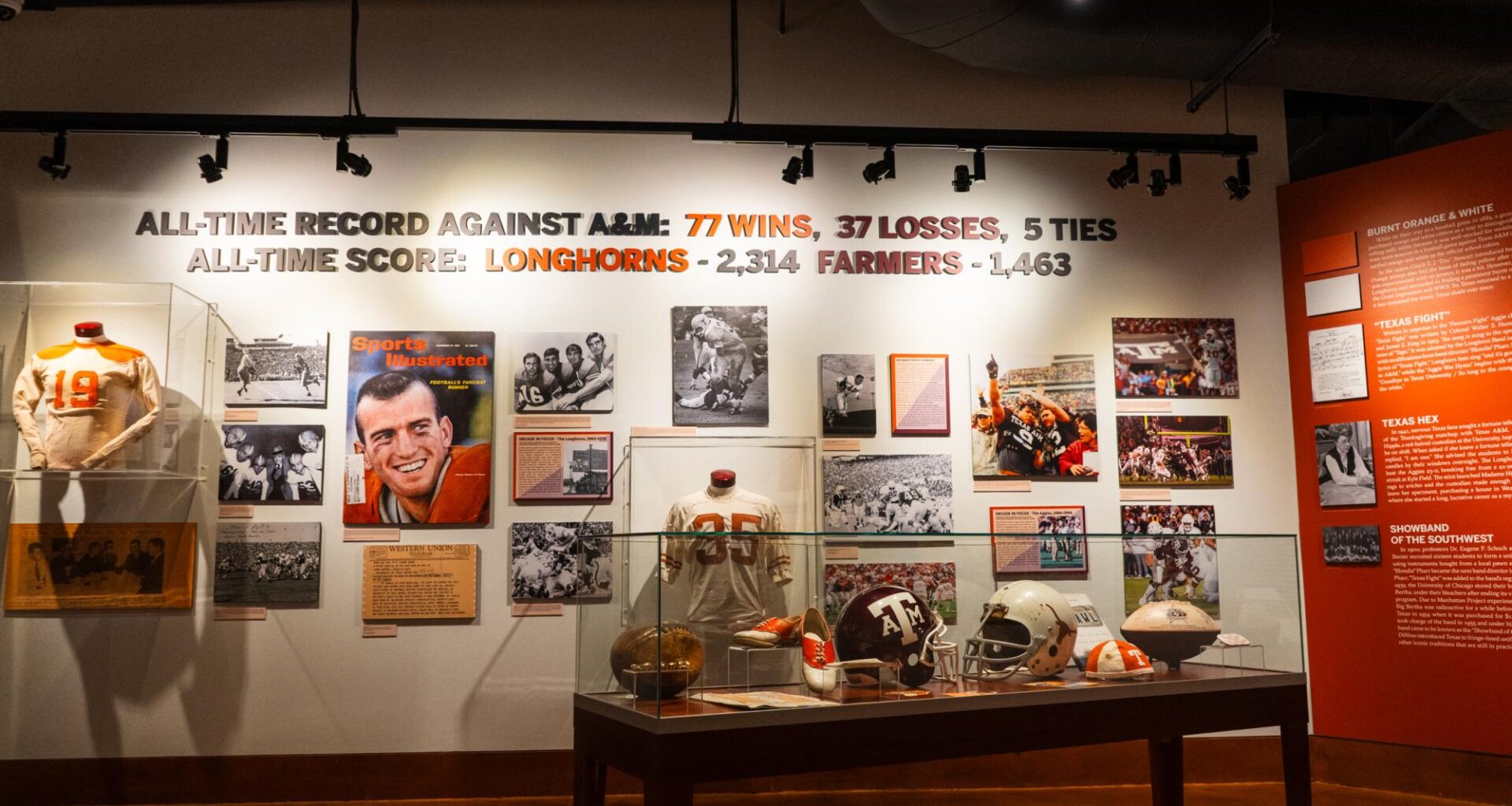Texas A&M’s maroon rarely appears in Austin. The sight of the taboo color in the Darrell K Royal Texas-Memorial Stadium is even rarer. But there it stands on the fifth floor of the stadium, right next to a wall painted in clashing burnt orange.
The H.J. Lutcher Stark Center for Physical Culture and Sports is hosting the exhibit “Farmers v. Longhorns,” commemorating the 120th game this year against the Longhorns’ in-state rival. The center also provides curator-led tours on Nov. 14 and 21, with no set end date, Stark Center curator Kyle R M said in an email.
“This game just means so much to so many generations of Texans,” R M said. “(The exhibit) was an opportunity to celebrate the return of that tradition. You know, try to showcase some sort of unity in Texas during these times.”
The exhibit contains historical jerseys and footballs, mural-sized photographs and game programs spanning decades.
“The more diverse a museum exhibit can be, the more opportunities there are for different visitors to engage with it,” R M said. “Providing a diversity of items, artifacts and objects to present this history gives a lot more opportunity for visitors to find where they engage.”
The Longhorns have accumulated 77 wins, 37 losses and five ties against A&M. The rivalry has proven brutal, R M said, but the exhibit highlights the respect that’s not always so easy to spot.
“Even though the rivalry gets fairly intense, there’s no love lost between Longhorn fans and Aggie fans,” R M said. “We’re all Texans at the end of the day, and we know that there is this really great and intense respect that we have for one another.”
The exhibit dedicated a wall to both schools’ responses after A&M’s annual bonfire collapsed during construction in 1999, killing 12 students. The wall showcases actions taken by UT and A&M students: donating class rings, participating in blood drives and petitioning to air a halftime performance dedicated to the students.
“It’s hard to tell the story of Texas football without A&M,” former UT linebacker Marcus Myers said. “The exhibit does a really good job of laying it out from both sides and giving examples of seminal moments in each program’s history.”
The exhibit presents the energy, enthusiasm and loyalty fans and players have that comes with rivalry. Myers, who attended the exhibit, said it mirrors that same passion he saw on the field.
“You can feel it in the air,” Myers said. “The lights are a little brighter … and you certainly want to be more focused. … Everybody goes a little bit harder. You try to approach it like any other game, but when you get into (it), you realize pretty quick that it’s different.”
People on both sides take extra precautions. Myers said when he played rival games, his coach would play the opponent’s fight song on loop to keep players focused in the locker rooms and on the field.
“Once sport became a part of campus life, friction between the rural, conservative ‘Farmers’ of A&M and the big-city ‘Steers’ of Texas grew into a true rivalry,” the Stark Center wrote on its website. “We tell ‘aggie jokes.’ They call us ‘t-sips.’ Our fight songs bid each other farewell.”

